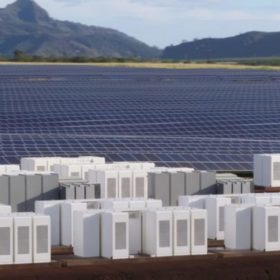Orb Energy begins third phase of one of India’s largest multi-site PV rooftops
The solar manufacturer is installing three rooftop systems in Karnataka and Tamil Nadu for polypropylene woven fabric maker Klene Paks. The units will have a cumulative capacity of 7.63 MW.
India takes to solar-powered desalination
A 10,000-liters-per-day plant in Tamil Nadu offers hope for powering clean water without fossil fuels. However, researchers warn the technology is difficult to scale up because PV panels take up so much space.
State can’t curtail solar power at convenience, says Tamil Nadu electricity regulator
Following a petition by National Solar Energy Federation of India (NSEFI), Tamil Nadu Electricity Regulatory Commission (TNERC) stated that the State Load Dispatch Centre (SLDC) cannot curtail renewable power at convenience.
Siemens Gamesa commissions 10 MW solar project for Coimbatore firm
Spanish-German renewable energy developer Siemens Gamesa provided engineering, procurement and construction (EPC) support for the 10 MW photovoltaic (PV) solar farm near Coimbatore in Tamil Nadu.
NLC completes 591 MW solar power projects in Tamil Nadu
State-owned NLC India Ltd – formerly the Neyveli Lignite Corporation – has commissioned 150 MW of solar power projects at Ramanathapuram and Virudhanagar Districts of Tamil Nadu, taking its total installed solar power capacity in the state to 591 MW.
SECI goes into overdrive with 6 GW tender plans announced in five days
The organization responsible for coordinating India’s push for 100 GW of new solar capacity by 2022 has had a busy week. But, as last year illustrated, tenders alone are not always a guarantee of new generation assets.
Electric vehicles off to a good start in 2019
Following Tamil Nadu’s plans to purchase 2000 electric buses, Karnataka aims to convert half the government vehicles in Bengaluru to electric by 2019 end. Further, Delhi has allocated Rs 100 crore to electric vehicles in its budget for 2019-20.
A solar decade: From 9 MW to 28 GW
There is widespread doubt about whether India can achieve its 100 GW solar target by 2022 but, having started from a base of only 9 MW of capacity 10 years ago, it would be foolish to write off the prospects of this solar superpower.
Tamil Nadu floats new solar policy to generate 9 GW by 2022
Tamil Nadu government has unveiled a new solar energy policy 2019 that aims at generating 9 GW for the state by 2022. The policy would be applicable to projects, programmes and installations relating to both solar PV and thermal energy, including utility as well as consumer categories.
Tamil Nadu to get 2,000 electric buses with German aid
For the purchase, the government of Tamil Nadu is seeking a loan from German state-owned development bank KfW, at an interest rate of 2%, according to reports.















